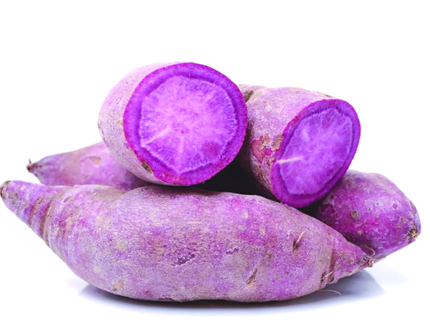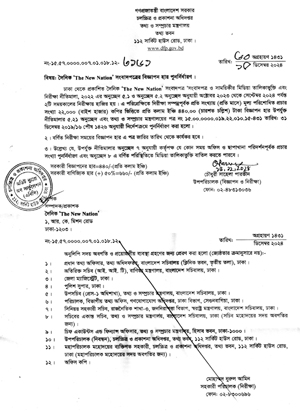Nilphamari Correspondent :
Purple potatoes, rich in vitamin A and zinc, have gained attention not only for their striking color but also for their health benefits. These unique potatoes, along with 89 other varieties, are currently on display at the ‘Potato Live Museum’ at the Domar Foundation Seed Potato Production farm in Nilphamari, organized by the Bangladesh Agricultural Development Corporation (BADC).
According to sources, the popular purple potato variety, known as Badc Alu-9, is particularly favored by health-conscious individuals due to its high anthocyanin content. This water-soluble pigment is known for its antioxidant, antimicrobial, anti-inflammatory, and anti-carcinogenic properties.
The live museum serves as an informative space for farmers, helping them learn about the diverse uses of potatoes.
Some varieties are suited for industrial purposes, others for export, and some are primarily consumed as vegetables. Additionally, several varieties are used in beautification, while others have applications in the food sector.
Subrata Majumdar, in charge of the museum and assistant director of the Domar Foundation Seed Potato Production Farm, shared that the museum displays 90 potato varieties, each yielding an average of 40-42 tons per hectare. He highlighted some varieties, such as Santana, Prada, Innovator, Alkendar, and Zinared, which are used to produce starch for industries like pharmaceuticals, textiles, and paper. These potatoes can also be processed into animal feed, bioplastics, ethanol, glue, binders, and texture agents.
Export-quality varieties like Sunshine, Kumbika, Rashida, Queenanni, and Brianna have high demand in European countries, Singapore, Nepal, and Bhutan.
Meanwhile, in the food sector, certain varieties are used to produce chips, french fries, and instant puddings. Some potatoes are even used in natural beauty products, helping with skin, hair care, and providing a glowing complexion.
During a recent visit to the museum, many people from surrounding districts, such as Nilphamari, Panchagarh, and Thakurgaon, were found exploring the exhibits.
Sadequl Islam, a 50-year-old farmer from Sakowa village in Panchagarh, shared, “By visiting the live museum, we gain valuable information about newly released, high-yielding potato varieties and their cultivation methods.”
Abdul Mannan Shah from Itakhola village in Nilphamari said, “I plan to expand my potato cultivation area because the diverse uses of this popular crop provide opportunities to fetch competitive prices.”
Farmers noted that, just a decade ago, potato production per hectare was around 7-8 tons. Today, however, yields have risen to 40-45 tons, thanks to the development of upgraded seed varieties and the transfer of cultivation knowledge by authorities. Md. Abu Taleb Mia, deputy director of the Domar farm, emphasized the importance of coordinated efforts across ministries like industry, commerce, and agriculture, along with the private sector, to maximize the benefits of potato cultivation.



